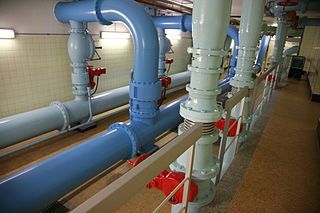From Guest Blogger Harvey: Saving Water in the Work Place

Water is in a state of crisis, based on statistics reported by the UN, water usage has grown at twice the rate of population increase in the last century. It is estimated that 1.8 billion people will be living in areas where water is scarce by 2025 and two-thirds of the planet’s population will be inhabiting regions that are water-stressed thanks to overuse, population growth and climate change.
Water is in short supply, in some places such as the third world this is more apparent, but even in the more developed world, there are still water shortages, although the signs of shortages won’t be as immediately noticeable. London for example, one of the more prosperous cities in the world is actually as dry as Syria and the Sudan, with only 58 gallons per person per year.
This is down to a number of different reasons, most often the catchment areas are not being properly being managed to collect an adequate amount of water. Deforestation, development over green belt land, the further urbanisation of areas and the placement of concrete and hard surfaces will lead to problems such as flooding in the lower lying regions of the hydrological plain. Water needs to reach the earth beneath us to build up our groundwater supplies.
Pressure is being put on businesses to save on water for greater sustainability. Here are ten ways in which water can be saved in the office.
1. Ensure your taps are turned off, even when you are using them, avoid needlessly having water running. Leaving the tap flowing can waste up to 6 litres per minute.
2. Have your windows cleaned less often, so long as this doesn’t conflict with health and safety standards.
3. Think of water usage as a fixed cost, most companies can save up to half on their water bills by saving how much water they use on a daily basis.
4. Appoint a water monitor as a way of informing staff how to best save on water and the reasons for doing so both in the office and at home.
5. Ensure pipes are well insulated from frost.
6. In hard water areas, pipes can gain a buildup of scale which can decrease heating efficiency. Installing a water softener can remove the mineral content from the water that leads to the buildup of scale making your heating more efficient. Find out more about water softening here.
7. Keep water system regularly monitored for leaks and wastage.
8. Fit water-minimisers wherever possible. This can include push tabs, flow regulators, cistern displacement devices, and low-flush toilets.
9. When purchasing new equipment always factor in their water efficiency into your purchasing decision.
10. Consider means of recycling water, either through re-using process water or utilising alternative water sources such as rainwater and/or greywater.
With these tips, your office can greatly reduce the amount of water it will be using on a daily basis. Not only will you be reducing the cost of your water bills, but you will also be taking less water from the ground reserves and doing your part to improve the stores of natural water.
